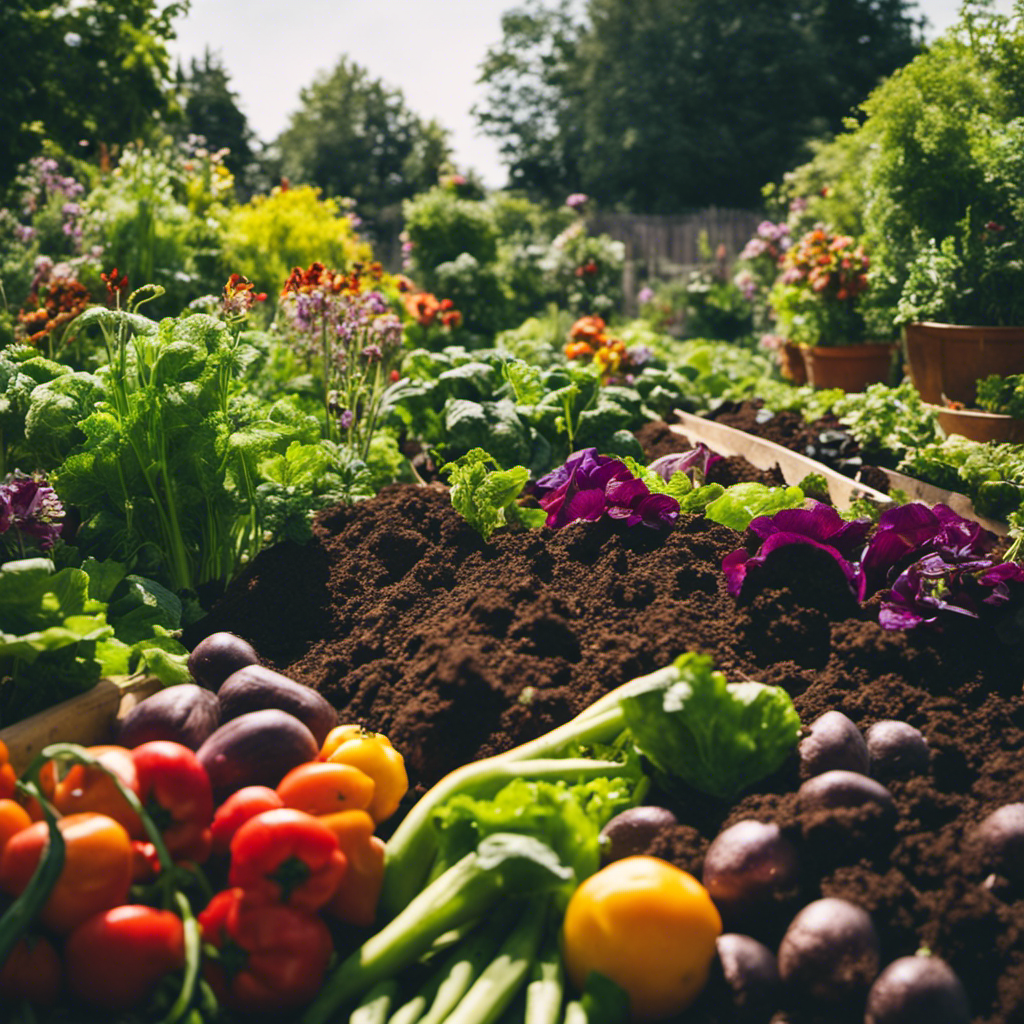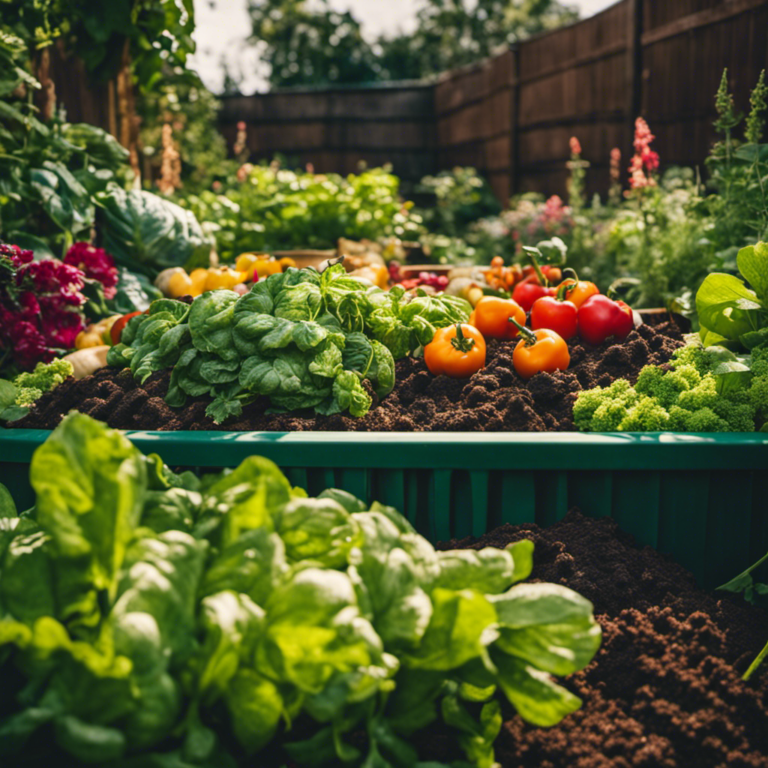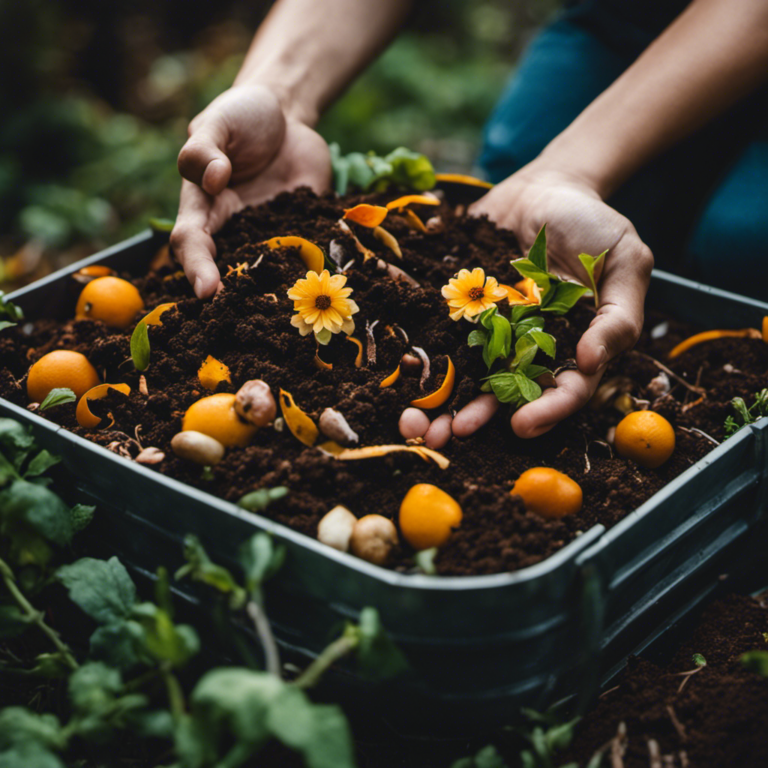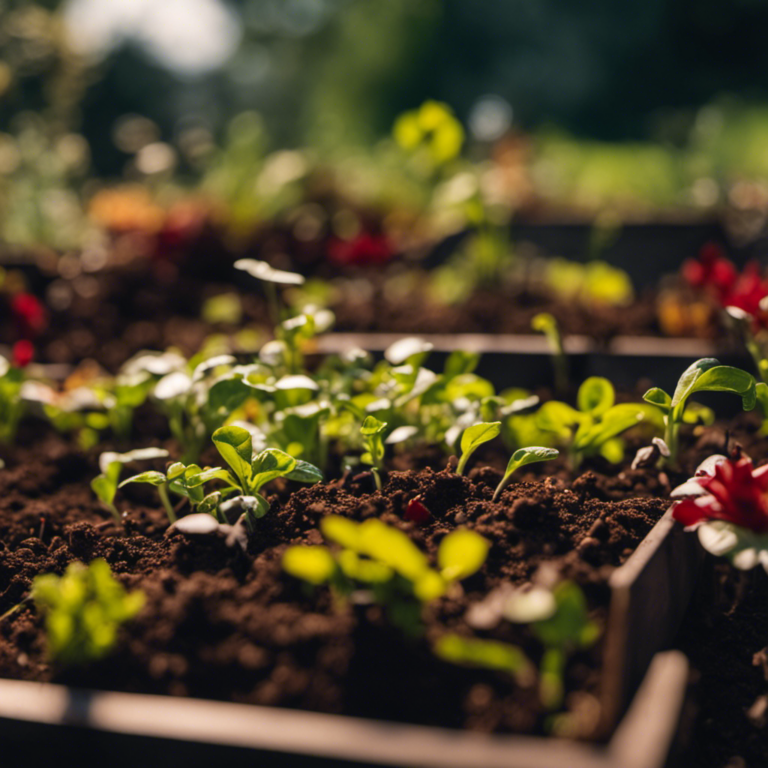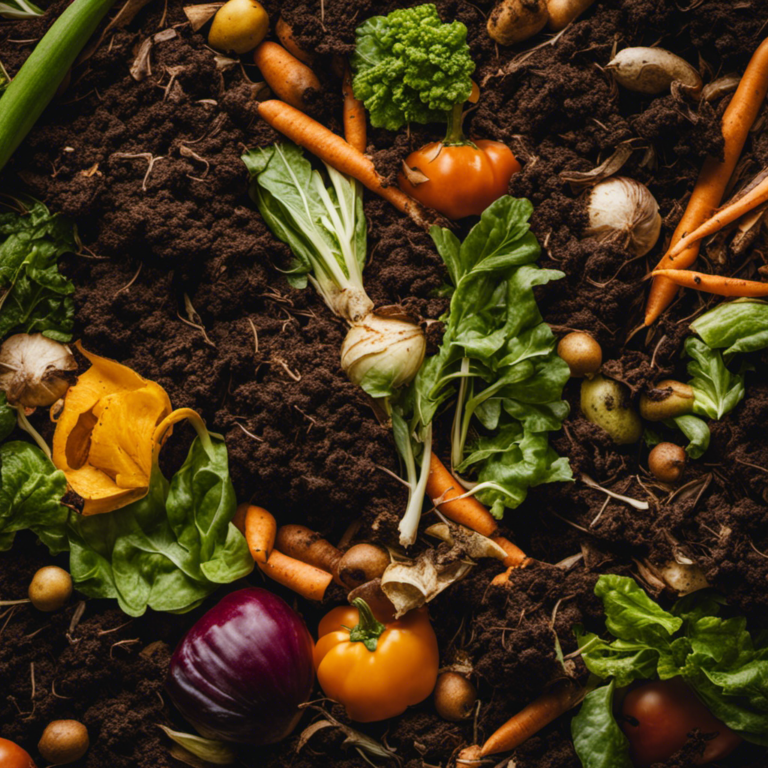Home composting is a simple yet powerful practice that can greatly benefit organic gardens. Instead of throwing away kitchen scraps and yard waste, we can recycle them into nutrient-rich soil that nourishes our plants and helps reduce waste.
In this article, we’ll explore the advantages of home composting, provide guidance on selecting the right method, and offer essential tips for successful composting.
Together, let’s harness the power of composting to create thriving organic gardens.
Key Takeaways
Home composting is a valuable practice for organic gardeners. It allows them to create nutrient-rich compost that nourishes their plants, leading to healthy growth and vibrant blooms. Just like a skilled chef carefully selects ingredients, gardeners can choose the right composting method and maintain their compost pile to ensure success. By embracing home composting, gardeners can witness the natural magic of their garden flourishing.
Benefits of Home Composting
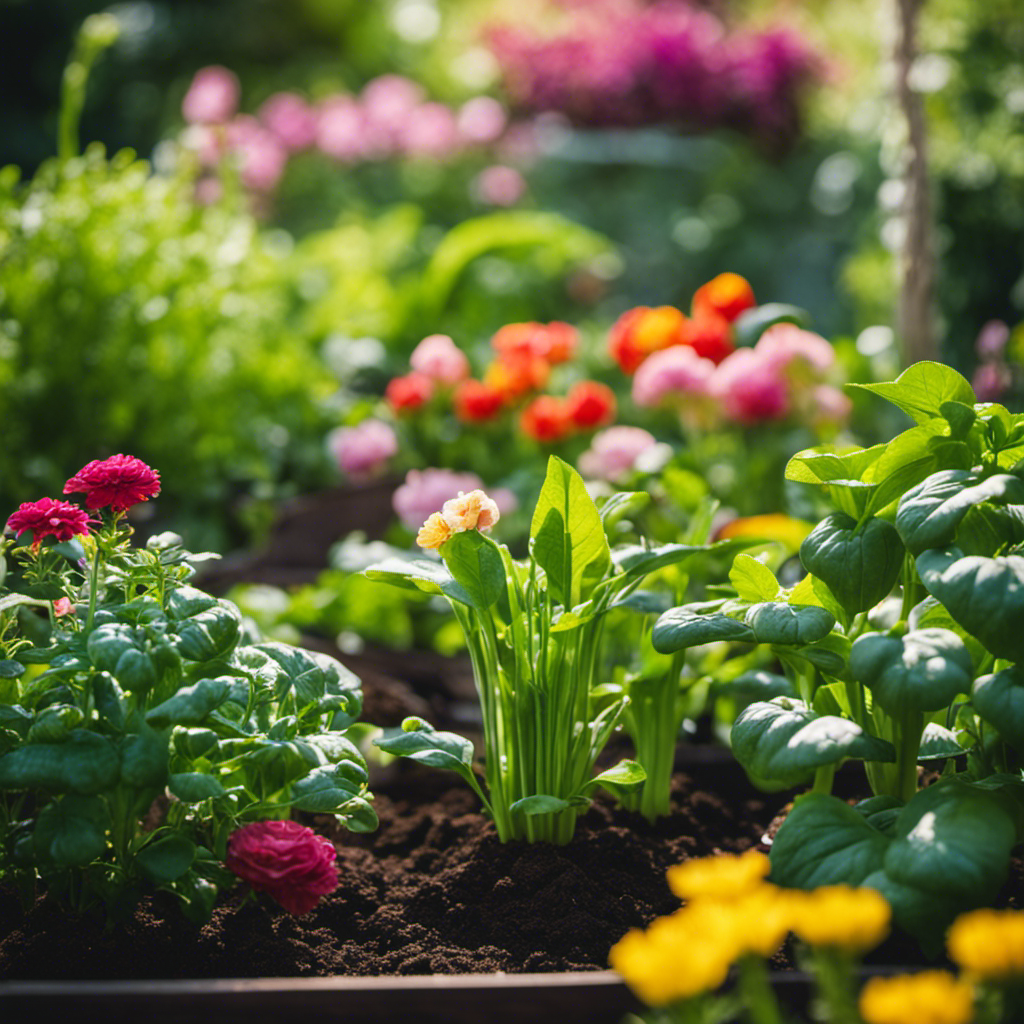
Benefits of Home Composting
Using natural materials to create compost is a cost-effective and eco-friendly way to enrich the soil in your garden. Composting involves breaking down organic matter like food scraps, yard waste, and leaves, into nutrient-rich compost. This process not only reduces waste but also offers numerous advantages for your garden.
One of the key benefits of home composting is the improvement of soil structure. Compost adds organic matter to the soil, making it more loose and better at retaining moisture. This helps prevent erosion, improve drainage, and promote healthy root growth. Additionally, compost acts as a natural fertilizer, supplying essential nutrients to plants. Unlike synthetic fertilizers, compost releases nutrients slowly over time, reducing the risk of nutrient runoff and water pollution.
Composting also helps suppress diseases and pests in your garden. The beneficial microorganisms in compost can combat harmful pathogens, preventing the spread of diseases among plants. Furthermore, compost attracts beneficial insects like earthworms and beetles, which naturally control pests.
Choosing the Right Composting Method

Choosing the Right Composting Method
When deciding on the best composting method for your garden, it’s important to consider the available space. There are several options to choose from, each with their own benefits and requirements. Here are four popular methods to consider:
-
Traditional composting: This method involves creating a compost pile in a designated area of your garden. It requires a balance of green and brown materials, regular turning, and moisture control. Traditional composting is ideal for larger gardens with ample space.
-
Vermicomposting: If you have limited space or live in an apartment, vermicomposting is a great option. It involves using worms to break down organic waste in a small bin. The worms consume the waste and leave behind nutrient-rich castings, or worm compost.
-
Hot composting: This method requires more effort and attention, but it produces compost quickly. Hot composting involves creating a large pile with a mix of organic materials, such as kitchen scraps and yard waste. The pile heats up, promoting decomposition. Regular turning and monitoring of temperature and moisture levels are essential for successful hot composting.
-
Trench composting: For those with limited space or who prefer a low-maintenance approach, trench composting is a good choice. It involves digging a trench in your garden and burying organic waste directly into the soil. Over time, the waste decomposes and enriches the soil.
Essential Components for Successful Composting
Essential Components for Successful Composting
Now let’s discuss the key elements that are necessary for successful composting in your organic garden. Composting is a natural process that requires the right combination of ingredients to create nutrient-rich compost for your plants.
One essential component is achieving a proper balance between green and brown materials. Green materials, such as grass clippings and kitchen scraps, provide nitrogen, while brown materials, like dried leaves and twigs, provide carbon. Aim for a ratio of 2 parts brown to 1 part green to ensure effective decomposition.
Another critical component is maintaining the right moisture level. Compost should be damp, similar to a wrung-out sponge. If it becomes too dry, the decomposition process slows down, and if it becomes too wet, it can produce unpleasant odors and become compacted. Regularly check the moisture level and adjust by adding water or dry materials as necessary.
In addition to moisture, airflow is also vital for successful composting. Oxygen helps break down the organic matter and prevents the compost from becoming anaerobic, which can lead to foul odors. To ensure proper airflow, either turn your compost pile regularly or use a compost bin with ventilation.
Lastly, the size of your compost pile or bin plays a role in its effectiveness. A larger pile or bin retains heat better, which accelerates decomposition. However, it’s important to choose a size that you can manage and maintain easily.
By following these essential components, you’ll be on your way to successful composting in your organic garden.
Stay tuned for the next topic, where we’ll cover composting techniques and troubleshooting.
Maintaining and Turning the Compost Pile

Maintaining and Turning the Compost Pile
To effectively maintain and turn your compost pile, it’s important to regularly monitor its moisture, airflow, and size. Proper maintenance is essential to ensure the decomposition process is efficient and productive.
Here are some valuable tips for maintaining and turning your compost pile:
-
Check the moisture: Moisture plays a vital role in the composting process. It should be at the right level, similar to a wrung-out sponge. If it’s too dry, add water; if it’s too wet, mix in dry materials like leaves or straw.
-
Promote airflow: Oxygen is necessary for aerobic decomposition. Regularly turning the compost pile helps introduce air and prevent anaerobic conditions. You can use a pitchfork or compost turner to aerate the pile, ensuring all the materials are mixed thoroughly.
-
Manage the size: The compost pile should have a minimum height and width of three feet. Smaller piles don’t generate enough heat, while larger ones are difficult to turn. If the pile becomes too large, consider splitting it into two separate piles.
-
Utilize compost turning techniques: There are various effective ways to turn your compost pile. Some popular techniques include the layering method, where you alternate green and brown materials, and the three-bin system, which involves rotating piles from one bin to another.
Harvesting and Using Compost in Your Organic Garden
Harvesting and Using Compost in Your Organic Garden
One important step in utilizing compost in your organic garden is harvesting it at the right time. Harvesting compost involves knowing when it has fully decomposed and transformed into rich, dark, and crumbly soil amendment. The process usually takes anywhere from two to six months, depending on the materials used and the environmental conditions. To determine if the compost is ready, you can check its temperature. If it no longer generates heat and feels cool to the touch, it’s likely ready for use. Another method is to look for signs of decomposition, such as the disappearance of recognizable materials and the presence of earthworms.
Once the compost is harvested, there are various ways to use it in your organic garden. One popular method is to mix it into the soil to improve its structure and fertility. This can be done by spreading a layer of compost on the garden beds and gently working it into the top few inches of soil. Compost can also be used as a mulch around plants, providing a protective layer that helps retain moisture, suppress weeds, and regulate soil temperature.
Another way to utilize compost is by making compost tea. This involves steeping compost in water, which allows the beneficial microorganisms and nutrients to leach into the water. The resulting liquid can then be sprayed onto the leaves and soil of your plants as a natural fertilizer and disease suppressant.
Troubleshooting composting problems is an important aspect of successfully utilizing compost in the garden. Common issues include an unpleasant odor, which can be caused by too much moisture or an imbalance of materials. To remedy this, you can turn the compost pile more frequently and add dry materials such as leaves or straw to restore the balance. Another problem is slow decomposition, which can be caused by insufficient aeration or a lack of nitrogen. Adding more oxygen by turning the pile regularly and incorporating nitrogen-rich materials like grass clippings or kitchen scraps can help speed up the process.
In conclusion, harvesting compost at the right time is crucial for using it effectively in your organic garden. By understanding the signs of readiness and employing various methods of application, such as mixing it into the soil or making compost tea, you can harness the full benefits of compost for your plants. Troubleshooting common composting problems ensures that the composting process runs smoothly and efficiently, providing a valuable resource for a thriving organic garden.
Remember: "Compost is like black gold for your garden."
Conclusion
Home composting is a valuable practice for organic gardeners. It provides them with nutrient-rich compost to nourish their plants, resulting in healthy growth and vibrant blooms.
Just like a skilled chef carefully selects ingredients, gardeners can choose the right composting method and maintain their compost pile to ensure success.
By embracing home composting, gardeners can witness the natural magic of their garden flourishing.
